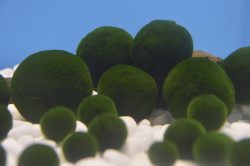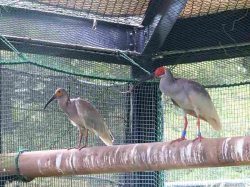
A Yakobi Maimai snail (Satsuma jacobii)
16:35 JST, July 27, 2024
OTSU (Jiji Press) — Snail sightings during the rainy season in Japan are becoming rarer as dry and urban areas increase, with half of the species in the Kinki region at risk of extinction, experts warn.
Efforts to create new green areas for snails to live in are unlikely to be very effective because it is difficult for them to move into such areas due to their poor mobility.
Snails are a type of shelled gastropod. There are some 800 species in Japan.
According to Katsuki Nakai, senior research scientist at the Lake Biwa Museum in Shiga Prefecture, snails are decreasing in places close to humans due to urbanization.
“Even if trees are planted nearby, [snails] cannot reach them by themselves to make them their homes” because they move only slowly using mucus, he said.
According to Nakai, about 100 of the roughly 200 species of snails in Kinki are threatened with extinction. Most live in forests, and many are believed to be affected by changes in vegetation and soil due to acid rain and feeding damage by deer.
Many species live in very small areas, meaning that the loss of a single habitat may significantly raise the risk of extinction. However, Nakai warned against artificial transfers of snails, saying that this may affect the ecology of native species.
Tsukasa Waki, associate professor at Toho University who researches shellfish parasites, cited expansion of dry areas as a factor behind the decrease in snails.
Snails are vulnerable to dry environments, and they prefer to live in moist places such as behind fallen leaves. They are “losing places to hide” as fallen leaves and rotten trees are often removed from parks in urban areas, Waki said.
“It’s important to continue protecting the habitats of snails that exist now,” in order to stop the decline in snail populations, Waki said. “It’s also important to encourage many people to know about the current situation and take interest.”
“There are endemic snail species in various parts of Japan, such as ‘Setouchi Maimai’ (Euhadra subnimbosa) and ‘Izumo Maimai’ (Euhadra idzumonis),” Waki said. “I hope people will first become familiar with local snails.”
"Science & Nature" POPULAR ARTICLE
-

Genome Study Reveals Milestone in History of Cat Domestication
-

Big Leap in Quest to Get to Bottom of Climate Ice Mystery
-

Japan Set to Participate in EU’s R&D Framework, Aims to Boost Cooperation in Tech, Energy
-

Paws on Parade: Nairobi’s Dogs Dazzle at ‘Pawchella’
-

Japan’s H3 Rocket Failed in Latest Launch, Says Official
JN ACCESS RANKING
-

Tokyo Economic Security Forum to Hold Inaugural Meeting Amid Tense Global Environment
-

Keidanren Chairman Yoshinobu Tsutsui Visits Kashiwazaki-Kariwa Nuclear Power Plant; Inspects New Emergency Safety System
-

Imports of Rare Earths from China Facing Delays, May Be Caused by Deterioration of Japan-China Relations
-

University of Tokyo Professor Discusses Japanese Economic Security in Interview Ahead of Forum
-

Japan Pulls out of Vietnam Nuclear Project, Complicating Hanoi’s Power Plans
























